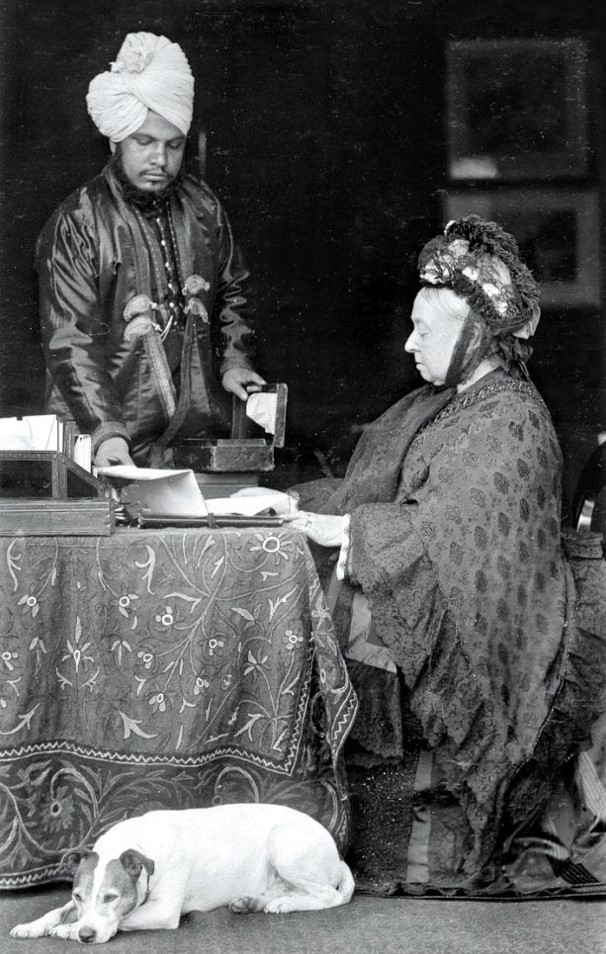Upon Victoria’s death in 1901, her son Edward demanded any correspondence between the empress and her close confidant to be burnt…reports Asian Lite News
As England, and some of the world, has stood riveted by the rituals of mourning around the death of queen Elizabeth II, and questions as to the relevance of the monarchy in the modern world are doing the rounds, it may be on interest to readers of this column to discover how the British monarchy, and Colonialism, impacted India’s vast and deep culinary cultures.
Queen Elizabeth II’s great great grandmother was Queen Victoria who reigned from 1837 to 1901, a period when colonial power in India took deep roots and a chunk of the Subcontinent came directly under the British crown (after the 1857 revolt).
By 1887, Victoria was ready to celebrate the golden jubilee of her rule over not just the UK but an empire on which it was said the sun never set, and which spanned many subjugated people from the West Indies to the east. But on a personal level, the queen was interested enough in India to ask for an Indian servant to help serve at a banquet for heads of states to mark her jubilee.
Abdul Karim was procured as a “gift” for her from Agra, according to the journalist Shrabani Basu, who discovered the deep and intimate relationship between the queen and her brown servant and wrote a book about it, which became the basis for the movie Victoria and Abdul. Once Karim entered the queen’s service, he was able to impress her not just to become her closest confidante but also with his version of the chicken curry and pilau, which were incorporated into the queen’s regular meal rotation according to A N Wilson, a biographer of Victoria.
With the empress herself putting the curry regularly at her dining table, it became a fashion in Victorian England to indulge in weekly “curry” —a practice that would later solidify into curry houses, and the ritualistic weekly indulgence in “curry” by most English families, even though that curry was (and is) unlike anything that Indians eat at home, where even the word “curry” is not used to describe diverse and nuanced regional and seasonal preparations with specific spices.
Upon Victoria’s death in 1901, her son Edward demanded any correspondence between the empress and her close confidant to be burnt. Victoria’s daughter Beatrice erased all references to Abdul in the queen’s journal—though portraits of him commissioned by the queen survived. The reason for this was racial prejudice. Historian Carolly Erickson writes in Her Little Majesty: “For a dark skinned Indian to be very nearly on a level with the queen’s white servants was all but intolerable, for him to eat at the same table with them, to share in their daily lives was viewed as an outrage”.
If this prejudice was part of Europe’s colonial enterprise, a fascination with the exotic “Oriental” was the flip side of the same. Edward Said, of course, has written about “Orientalism” and its construction in his seminal work, but even in food books and references to figures that would play a key role in popularising the exotic east and its “potent” tastes, we can see the exoticising of the east by the west.
Sake Dean Mahomed (1759-1851) was one of the most notable early Indian immigrants to Europe/England, his title “sake” being a corruption of the word “sheikh”. He was a surgeon and an entrepreneur and wrote an account called The Travels of Dean Mahomet (1794) about his travels from Patna, eventually part of the Bengal Presidency to Britain, where he died in Brighton in 1851 (after opening the Brighton Bath house), and where he was alternately known as Dr Brighton too.
Dean Mahomed introduced “shampoo” to the western world—offering therapeutic “champi” massage at his Brighton Bath house to a western clientele; the word shampoo is a corruption of “champi”, the traditional Indian head massage with oil. But among his other lesser known contributions is also the setting up of the first Indian restaurant in the west. In 1810, when Dean Mahomed moved to London, he opened the Hindoostane Coffee House near Portman Square in central London, which offered, among other things, hookah “with real chilm tobacco, and other Indian dishes…allowed by the greatest epicures to be unequalled to any curries ever made in England”. A plaque commemorates the place where the original restaurant once stood.
Dean Mahomed was ahead of his times and curry would take off in England only with Victoria’s patronage, but his business idea of serving “Indianised British food” suitable to English palates—mild spices, a touch of the exotic oriental– would in fact get replicated repeatedly through the centuries till quite recently when Frenchified Indian restaurants in London in the 1990s served up fare that was essentially European but with Indianish flavours to appease western palates who did not seem to understand the true complexity or nuance of regional Indian cooking. Veeraswamy, which is now owned by Camellia and Namita Panjabi (Camellia was the culinary director at the Taj and the key to setting up its iconic restaurants such as the Bombay brasserie that put Mumbai’s street food in a five star setting, and was pathbreaking), is today London’s oldest Indian restaurant. But when it opened in the 1920s, when India was still under the crown, its ownership was white English – Edward Palmer opened it in Piccadilly in 1926, serving the same idea of Dean Mahomed’s food, but by this time thanks to the Victorian and Regency eras, curry was more accepted, and Veeraswamy made Indianish food highly fashionable.
ALSO READ-The British editor who exposed Jallianwala Bagh massacre

